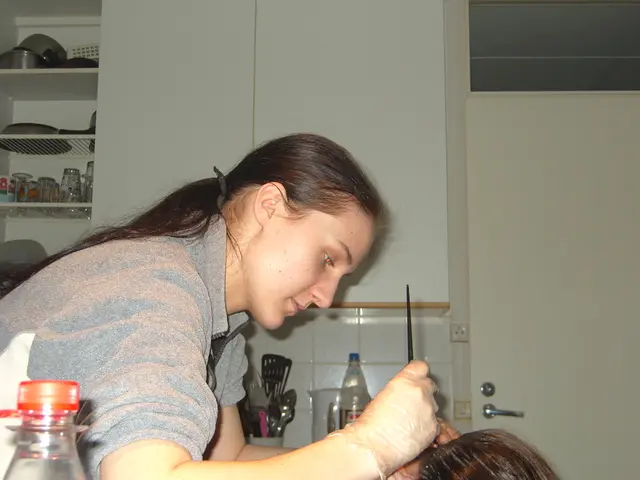MRSA: A Closer Look
MRSA Colonization: Spread, Halt, and Additional Insights
Ready to dive into the nitty-gritty of MRSA? Here's a straightforward, no-frills guide to understanding this antibiotic-resistant bacterium.
MRSA, or Methicillin-resistant Staphylococcus aureus, doesn't always cause symptoms when it's present on your body. This situation, known as colonization, means you could be carrying MRSA without showing any signs of an infection.
Skin areas such as the nose, throat, armpits, groin, skin folds, and the perineal area are common spots for MRSA to set up shop. Although it's harmless in this state, MRSA colonization remains a cause for concern among healthcare professionals. That's because people carrying MRSA can unknowingly spread it to others, especially in crowded settings like hospitals, leading to infections.
An MRSA infection is dangerous due to its resistance to common antibiotics. Strains of Staphylococcus aureus that cause MRSA are resistant to methicillin and related drugs like penicillin, amoxicillin, and oxacillin. This makes treating the infection more challenging and potentially riskier, especially for vulnerable individuals.
How does MRSA spread? It can be passed through:
- Close contact with people who have an MRSA infection or colonization.
- Reusing or sharing contaminated equipment or supplies.
- Environmental contamination of household surfaces.
To avoid MRSA infection, follow these hygiene guidelines:
- Regularly wash your hands and take showers, utilizing antiseptic soap.
- Keep wounds covered and clean.
- Avoid sharing personal items like towels, razors, clothing, and bedding.
- Wash clothes, sheets, and towels at high temperatures and dry them on high heat.
- Frequently disinfect surface areas.
In medical settings, professionals may screen patients for MRSA bacteria, particularly those scheduled for surgery. If they detect MRSA colonization, they might prescribe a nasal cream or spray, body wash, and shampoo to help reduce the bacteria. Typically, use spans around 5 to 10 days.
Lastly, watch out for signs of skin infection, especially at sites with cuts or abrasions. Signs of MRSA infection include:
- Pain
- Redness
- Pus
- Swelling
- Feeling warm to the touch
By adhering to hygiene practices at home and in healthcare settings, you can minimize the risk of MRSA colonization and MRSA infection.
FAQs
- Does MRSA go away on its own? - Typically, MRSA infections require medical treatment and do not go away without it.
- Does chlorine kill MRSA? - Yes, chlorine can kill MRSA, but it may not be effective in all situations and at low concentrations.
- Will I always carry MRSA bacteria? - MRSA colonization can be temporary, but some people may carry it for extended periods or intermittently without developing an infection. It's essential to practice good hygiene to minimize the risk of spreading the bacteria.
- MRSA, or Methicillin-resistant Staphylococcus aureus, can cause chronic diseases and is of concern in the field of science.
- Workplace-wellness programs should focus on educating employees about MRSA and its potential risks, especially as it can infect respiratory conditions and eye-health.
- Chronic diseases like cancer and cardiovascular-health conditions can be exacerbated by MRSA infections, making it crucial to understand therapies-and-treatments for this superbug.
- In addition to skin-care, mental-health and fitness-and-exercise are important aspects of health-and-wellness, but it's equally vital to be aware of the impact of MRSA on physical health and implement prevention strategies.
- Proper nutrition plays a key role in boosting the immune system and reducing the risk of infections, including superbugs like MRSA.
- Skin-conditions, such as boils, abscesses, and impetigo, can be indicators of MRSA infection, making it essential to monitor skin health closely.
- Some common locations for MRSA colonization include the nose, throat, and various skin folds, emphasizing the importance of regular hygiene practices.
- Beneficial practices to prevent MRSA include washing hands frequently with antiseptic soap, using clean linens, and disinfecting surfaces regularly, thus promoting a healthier home environment.
- Although chlorine can kill MRSA bacteria, it may not always be effective, and adhering to hygiene practices is the best way to minimize the risk of MRSA colonization and infections.








